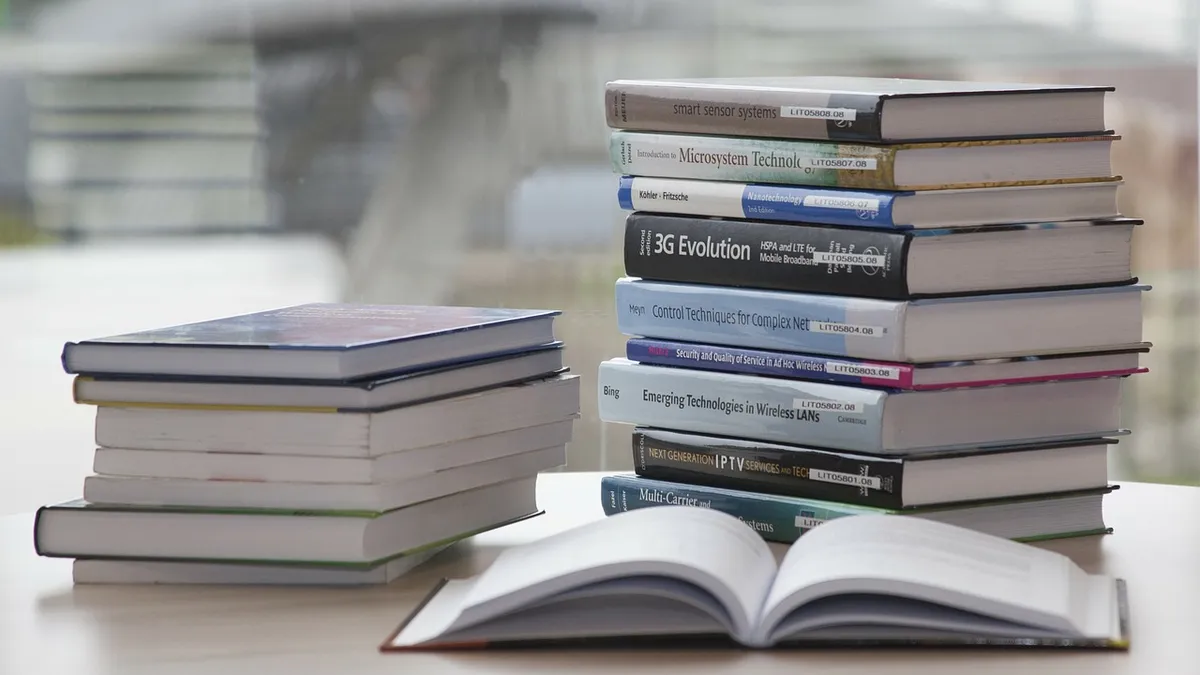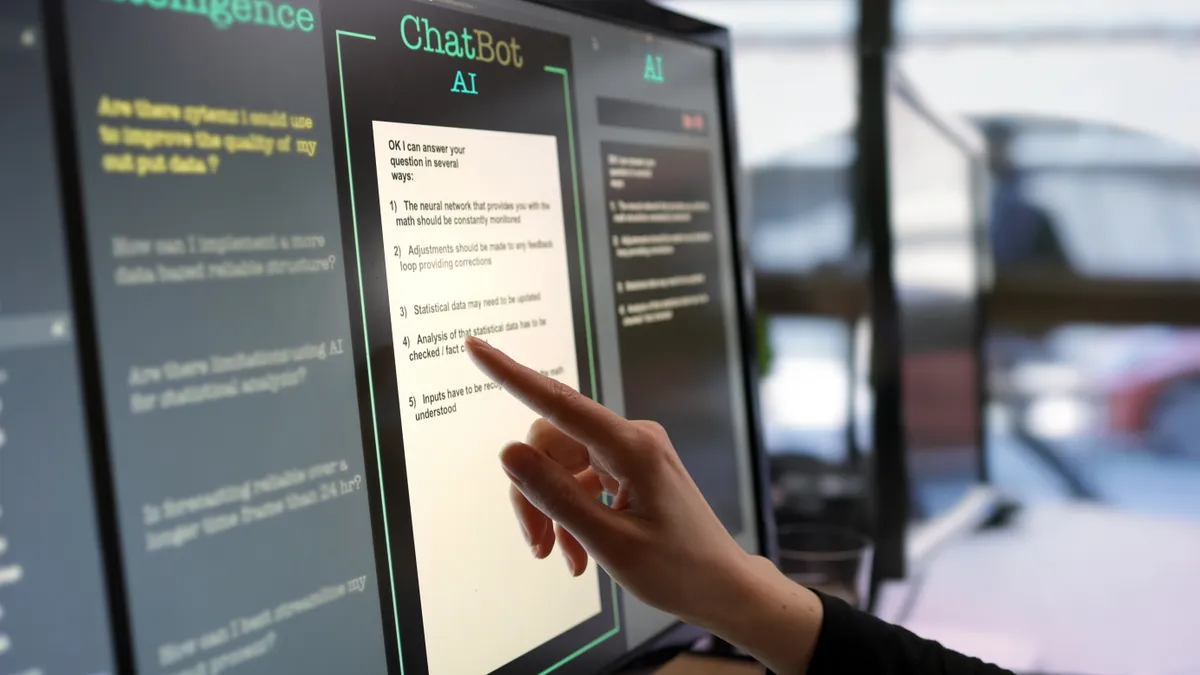Education is ever-changing, and with the field evolving now perhaps faster than ever, there's also never any shortage of books covering the latest trends and issues in the profession. With the holidays on the horizon, it's the perfect time to catch up.
In recent months, a number of books on topics ranging from charter schools and education in the inner-city to flipped and personalized learning crossed the Education Dive desk. There's a little something for everyone at all levels of education, so here's a rundown of each.
A Light Shines In Harlem
Author: Mary C. Bounds
Price: $18.64 (Hardcover), $10.99 (Kindle)
In A Light Shines In Harlem, journalist Mary C. Bounds chronicles the story of New York's first charter school, Sisulu-Walker Charter School in Harlem. Founded by equity fund manager Steven Klinsky, the school underwent a number of challenges, from gaining approval and applicants to establishing curriculum and finding enough space to operate — which is where minister Dr. Wyatt Tee Walker, a close friend of Dr. Martin Luther King Jr., came in. Walker allowed the school to initially operate in his church's community building.
Ultimately, the school's success following its opening in 1999 helped fuel the education reform and charter movements, so this book is crucial reading for anyone on either side of the fence.
Teacher as Architect, Second Edition
Authors: Shawn K. Smith, Ann M. Chavez, Garrett W. Seaman
Price: $27.99 (for ISTE members), $37.99 (for non-members)
Originally published in 2012, Teacher as Architect lays out a framework for utilizing blended learning and tech-based curricula. This second edition, released in June by the International Society for Technology in Education and ModernTeacher Press, builds on that model for implementing a blended model, touching on the Common Core State Standards, assessment building, and popular learning theories like the direct instruction, constructivist, and inquiry-based approaches. It also lays out a blueprint for designing blended curriculum.
You Can Do This: Hope and Help for New Teachers
Author: Robyn R. Jackson
Price: $13.21 (Hardcover), $9.99 (Kindle)
Everyone entering a new profession can probably use some help and some words of encouragement. In You Can Do This, Robyn Jackson — a former teacher and school administrator who now heads professional development provider Mindsteps Inc. — provides both in a clear and concise manner, sharing her own personal stories while detailing best practices and warning about bad advice and other pitfalls in a grounded, personalized manner.
Personalized Learning: A Guide for Engaging Students with Technology
Authors: Peggy Grant and Dale Basye
Price: $12.57 (for ISTE members), $17.95 (for non-members), $9.95 (Kindle)
Another ISTE publication, Personalized Learning makes the case for how K-12 administrators, tech coordinators, and teachers can use technology to improve education for students ranging from the gifted to those with disabilities. Addressed in the book are different practices for learners at varying grade and ability levels, how to conform those practices to standards like the Common Core, and case studies and tips on hot topics like bring your own device (BYOD) policies and one-to-one learning. Additionally, the book includes a section of forms, surveys, and checklists for yourself, peers, and students. Perhaps best of all: At just under 200 pages, it's a quick, concise rundown of what you need to know.
Who's Afraid of the Big Bad Dragon?
Author: Yong Zhao
Price: $18.36 (Hardcover), $12.99 (Kindle), $17.46 (Audiobook)
Much has been made of the Chinese education system's successes when compared to the U.S., particularly when it comes to math, reading, and science scores among the 34 Organisation for Economic Co-operation and Development nations. In Who's Afraid of the Big Bad Dragon, Yong Zhao, presidential chair and director of the University of Oregon College of Education's Institute for Global and Online Education, tackles the pros and cons of America's obsession with mimicking China's education system. Zhao, who was born in China and also taught there, details how the nation's parents, educators, and leaders hate its education system despite its ability to produce some of the world's top students. Why? In part, it's because the process hinders these students' creative thinking abilities. That makes Western schools extremely attractive to them. Another must-read for anyone on either side of the debate, the book makes the case for, at the very least, finding a middle ground that utilizes the best of both systems.
Flipped Learning: Gateway to Student Engagement
Authors: Jonathan Bergmann and Aaron Sams
Price: $15.37 (for ISTE members), $17.29 (Amazon), $9.95 (Kindle)
As the cover states, Flipped Learning is meant to serve as a companion to Bergmann and Sam's 2012 book, Flip Your Classroom: Reach Every Student in Every Class Every Day. Educators might not necessarily need to backtrack and read that previous work first, though — the first several chapters define and detail the flipped learning model, along with its benefits and misconceptions. The larger chunk of the book, however, focuses on the stories of 10 educators in subjects varying from English to biology and the paths they took to flip their classrooms. At just over 160 pages, it's another quick read that will bring you up to speed on one of today's hottest ed trends.
Web 2.0: How-To For Educators, Second Edition
Authors: Gwen Solomon and Lynne Schrum
Price: $27.97 (for ISTE members), $29.95 (Amazon), $19.95 (Kindle)
Exemplifying the ever-changing education technology landscape, this second edition of 2010's Web 2.0, published in July, builds upon the tools and apps listed in the original. From mobile apps, tools from tech giants like Google, and visual learning tools to blogs, social media, and wikis, no digital learning stone is left unturned here. It's not enough to just list flashy tools and briefly explain what they are, though — Solomon and Schrum also break down when it's best to use a particular tool, who is using it, how to use it best, and where to find other resources, as well as providing practical examples. For additional reading, see the duo's 2007 book, Web 2.0: New Tools, New Schools.
Would you like to see more education news like this in your inbox on a daily basis? Subscribe to our Education Dive email newsletter! You may also want to read Education Dive's look at 10 ways Chromebooks are enhancing K-12 classrooms.





















